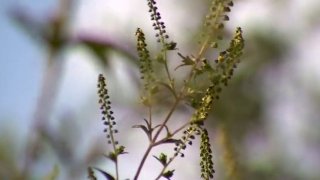
The recent bout of warm weather is dragging out the fall allergy season.
Often called "hay fever," ragweed begins to make its annual appearance in North Texas in late August and typically peaks in mid-September. It typically sticks around until the first frost.
The first frost could be in November, though some areas of North Texas north of U.S. Highway 380 may be close to freezing this week.
The ragweed plant is found all over Texas, though it's most common in the wide-open rangelands. The weed itself is a hearty, green stalk with yellow flowers and polyps of pollen. It thrives across dry, hot, and arid landscapes. The yellowish pollen is easily airborne and dispersed by the Texas wind.
Get DFW local news, weather forecasts and entertainment stories to your inbox. Sign up for NBC DFW newsletters.
"Ragweed pollen can travel dozens if not hundreds of miles, so it may not be even within your site or within your radius but it's blowing in from a field far away," Dr. Zachary Marshall, an allergist at the McGovern Allergy and Asthma Clinic in Bellaire, said.
Experts say one ragweed plant can produce up to a billion pollen grains, and that several factors, including higher carbon dioxide levels, can lead to a longer allergy season.
Ragweed symptoms include a runny nose, sneezing, congestion, headache, watery eyes, and scratchy throat. Coughing and wheezing can also accompany flare-ups.
Until ragweed season ends, some helpful tips include:
- limiting time outdoors when the pollen count is highest (usually in the morning during late summer and early fall).
- keep the windows closed
- change clothes after being outside
- shower before bed and wash hands after handling anything that's been outside.